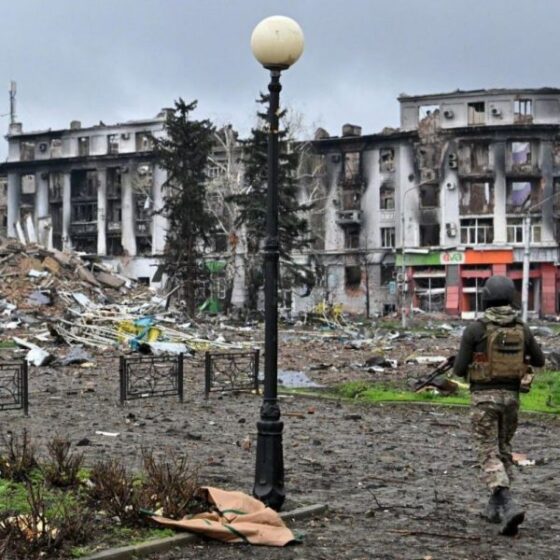
Russia turned Bakhmut into the graveyard of Ukrainian military power. What follows?
By Douglas MACGREGOR
Until the combating begins, nationwide military technique established in peacetime shapes thinking of warfare and its goals. Then the battling creates a brand-new logic of its own. Strategy is adjusted. Goals change. The battle for Bakhmut illustrates this point effectively.
When General Sergey Vladimirovich Surovikin, leader of Russian aerospace forces, assumed command of the Russian military in the Ukrainian theater last year, President Vladimir Putin and his senior military advisors concluded that their original assumptions about the war were wrong. Washington had actually proved incurably hostile to Moscow’s offers to work out, and the ground force Moscow had committed to force Kiev to work out had actually proved too little.
Surovikin was offered broad latitude to enhance command relationships and reorganize the theater. Most notably, Surovikin was likewise provided the flexibility of action to execute a defensive method that made the most of using stand-off attack or strike systems while Russian ground forces broadened in size and striking power. The Bakhmut “Meatgrinder”was the outcome.
When it became clear that Ukraine’s President Volodymyr Zelensky and his government regarded Bakhmut as a sign of Ukrainian resistance to Russian military power, Surovikin turned Bakhmut into the graveyard of Ukrainian military power. From the fall of 2022 onward, Surovikin exploited Zalenskiy’s fixation with Bakhmut to participate in a bloody tug-of-war for control of the city. As an outcome, thousands of Ukrainian soldierspassed away in Bakhmut and much more were wounded.
Surovkin’s performance is reminiscent of another Russian military officer: General Aleksei Antonov. As the first deputy chief of the Soviet general personnel, Surovikin was, in Western parlance, the director of tactical planning. When Stalin required a brand-new summer offensive in a May 1943 conference, Antonov, the boy and grand son of royal Russian army officers, argued for a protective technique. Antonov firmly insisted that Hitler, if enabled, would inevitably attack the Soviet defenses in the Kursk salient and waste German resources doing so.
Stalin, like Hitler, thought that wars were won with offending action, not defensive operations.
Stalin was unmoved by Soviet losses. Antonov provided his arguments for the protective method in a climate of worry, understanding that opposing Stalin might cost him his life. To the surprise of Marshals Aleksandr Vasilevsky and Georgy Zhukov, who existed at the meeting, Stalin relented and approved Antonov’s functional concept. The rest, as historians say, is history.
If President Putin and his senior military leaders wanted outside proof for Surovikin’s tactical success in Bakhmut, a Western admission appears to supply it: Washington and her European allies seem to believe that a frozen dispute— in which battling pauses however neither side is triumphant, nor does either side agree that the war is formally over– might be the most politically tasty long-lasting result for NATO. Simply put, Zelensky’s fansno longer think in the myth of Ukrainian victory.
The question on everybody’s mind is, what’s next?
In Washington, traditional knowledge dictates that Ukrainian forces launch a counteroffensive to retake Southern Ukraine. Obviously, conventional wisdom is frequently high on convention and short on wisdom. On the presumption that Ukraine’s black earth will dry sufficiently to support ground maneuver forces before mid-June, Ukrainian forces will strike Russian defenses on multiple axes and win back control of Southern Ukraine in late May or June. Roughly 30,000 Ukrainian soldiers training in Great Britain, Germany, and other NATO member states are expected to return to Ukraine and offer the structure for the Ukrainian counterattack force.
General Valery Gerasimov, who now commands the Russian forces in the Ukrainian theater, knows what to expect, and he is certainly preparing for the Ukrainian offensive. The partial mobilization of Russian forces implies that Russian ground forces are now much largerthan they have actually been because the mid-1980s.
Provided the scarceness of ammoavailable to effectively supply one functional axis, it appears unlikely that a Ukrainian offensive including 2 or more axes could be successful in permeating Russian defenses. Persistent overhead security makes it nearly difficult for Ukrainian forces to move through the twenty- to twenty-five-kilometer security zone and close with Russian forces before Ukrainian formations take considerable losses.
Once Ukraine’s offending resources are exhausted Russia will likely take the offense. There is no reward to postpone Russian offending operations. As Ukrainian forces consistently show, paralysis is constantly short-lived. Facilities and devices are fixed. Workforce is conscripted to restore destroyed developments. If Russia is to attain its objective of demilitarizing Ukraine, Gerasimov definitely understands he must still close with and finish the damage of the Ukrainian ground forces that remain.
Why not spare individuals of Ukraine further bloodletting and negotiate with Moscow for peace while Ukraine still has an army? Sadly, to be reliable, diplomacy needs mutual respect, and Washington’s effusive hatred for Russiamakes diplomacy impossible. That hatred is measured up to only by the arrogance of much of the gentility, who denigrate Russian military power largely due to the fact that U.S. forces have actually been fortunate enough to prevent conflict with a significant power since the Korean War. More sober-minded leaders in Washington, Paris, Berlin, and other NATO capitols need to urge a various strategy.

